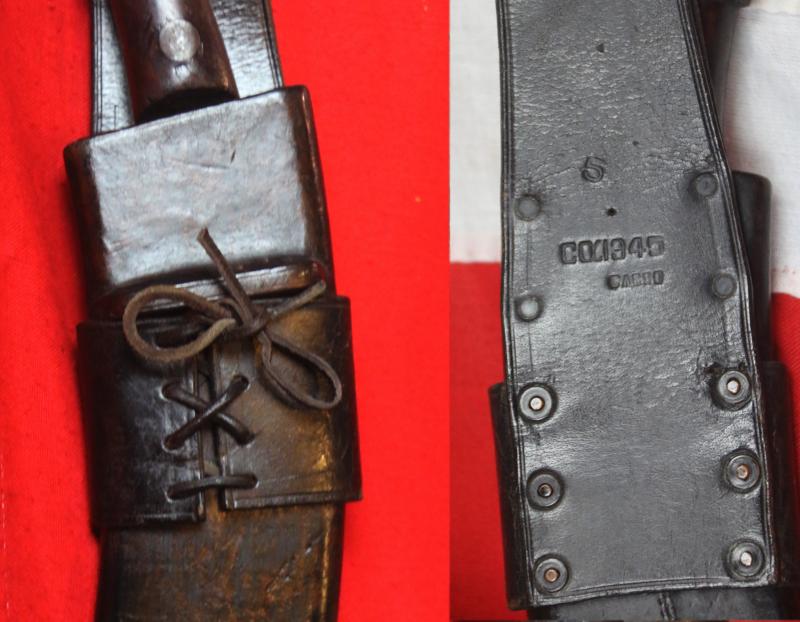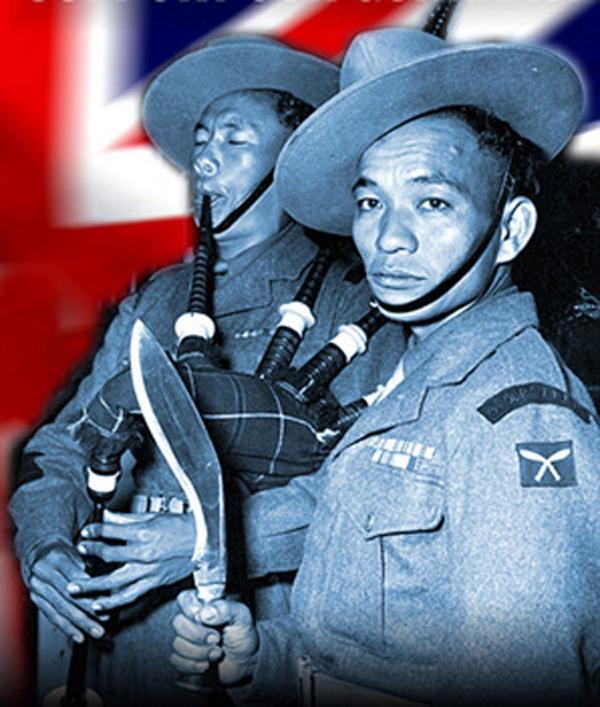An Exemplary, Original WW2 Army Ordnance Combat Service Issue Gurkha Kukri.Field Marshall Manekshaw once said, " If someone says he does not fear death, then he is either telling a lie or he is a Gurkha".
In amazing condition for a WW2 vintage British combat service issue Gurkha kukri. Ordnance stamps on the blade and the leather frog on the leather covered wooden scabbard, with original small brass chape end, and all parts have a stupendous patina.
It has spent over six hours in our workshop being artisan hand cleaned and hand polished. It was incredibly grubby when it arrived, but it has been transformed into how it once looked after the wars end. Evry single part is original, and complete, including its original leather laced belt frog
"Ayo Gorkali" The Gurkha Battle Call "The Gurkhas Are Coming!" Field Marshall Manekshaw once said, " If someone says he does not fear death, then he is either telling a lie or he is a Gurkha".
The Gurkhas are probably the finest and bravest, combat soldiers in the world, and universally agreed throughout the entire world, as the most feared, with legendary loyalty to the British Crown.
Just one example below of the Gurkhas combat service in WW2;
600 sorties by Dakota transport aircraft transferred 9,000 men to the landing zones. Chowringhee Chindit Gurkha base was abandoned once the fly-in was completed, but Broadway Chindit Gurkha base was held with a garrison which included field artillery, anti-aircraft guns and even a detachment of six Mk.VIII Spitfires of No.81 Squadron RAF from 12 March to 17 March. On 17 March they were attacked during take-off by Japanese Ki-43 'Oscars'. S/L William 'Babe' Whitamore and F/O Alan M Peart managed to get airborne, with both shooting down one 'Oscar' each. Whitamore was shot down and killed but Peart survived for over half an hour, holding off over 20 enemy fighters. The remaining Spitfires were destroyed on the ground for the loss of another pilot, F/Lt Coulter. Peart flew back to Kangla the same day in his damaged Spitfire (FL-E JF818) and reported the action.28 The detachment was duly ended by AFC Stanley Vincent, the CO of No. 221 Group.27
Fergusson's brigade set up another base named Aberdeen north of Indaw, into which 14th Brigade was flown. Calvert's brigade established yet another, named White City at Mawlu, astride the main railway and road leading to the Japanese northern front. 111 Brigade set up ambushes and roadblocks south of Indaw (although part of the brigade which landed at Chowringhee was delayed in crossing the Irrawaddy River), before moving west to Pinlebu.
Ferocious jungle fighting ensued around Broadway and White City {all the Chindit bases had British city region names}. At times, British and Japanese troops were in close combat, bayonets and kukris against katanas. On 27 March, after days of aircraft attack, the Japanese attacked Broadway for several nights before the attack was repulsed with flown-in artillery and the aid of locally recruited Kachin irregulars.
The deprivations of the Burma campaign were horrifying for all sides. This is just one account in Burma. Several British soldiers said that the crocodiles preyed on the Japanese soldiers in the swamp. The most prominent firsthand retelling of what happened comes from naturalist Bruce Stanley Wright, who participated in the Battle of Ramree Island and gave this written account:
“That night of Feb. 19, 1945 was the most horrible that any member of the M.L. motor launch crews ever experienced. The crocodiles, alerted by the din of warfare and smell of blood, gathered among the mangroves, lying with their eyes above the water, watchfully alert for their next meal. With the ebb of the tide, the crocodiles moved in on the dead, wounded, and uninjured men who had become mired in the mud…
The scattered rifle shots in the pitch black swamp punctured by the screams of the wounded men crushed in the jaws of huge reptiles, and the blurred worrying sound of spinning crocodiles made a cacophony of hell that has rarely been duplicated on Earth. At dawn, the vultures arrived to clean up what the crocodiles had left.” — Bruce Stanley Wright
The giant lizards had a feast of their lives as nearly 1,000 terrified soldiers dripped blood and sweat into the crowded confines of the Ramree mangrove swamp.
Around 500 Japanese soldiers are believed to have fled the mangrove swamps, with 20 of them being recaptured by British forces who had set up a perimeter around the dense jungle. Around 500 of the fleeing men, however, never made it out of the swamp.
Survivors are said to have heard harrowing stories of hundreds of crocodiles assaulting the soldiers in a mass assault, as well as appalling tales of crocodiles attacking the soldiers individually.
On 12/13 May 1945 at Taungdaw, Burma now Myanmar, Rifleman Lachhiman Gurung VC was manning the most forward post of his platoon which bore the brunt of an attack by at least 200 of the Japanese enemy. Twice he hurled back grenades which had fallen on his trench, but the third exploded in his right hand, blowing off his fingers, shattering his arm and severely wounding him in the face, body and right leg. His two comrades were also badly wounded but the rifleman, now alone and disregarding his wounds, loaded and fired his rifle with his left hand for four hours, calmly waiting for each attack which he met with fire at point blank range. Afterwards, when the casualties were counted, it is reported that there were 31 dead Japanese around his position which he had killed, with only one arm.In the Falklands War in 1982 the Argentinians abandoned Mount William without a fight simply because the enemy forces advancing towards them were the 2nd Battalion, 7th Ghurka Rifles.
Code: 25570










